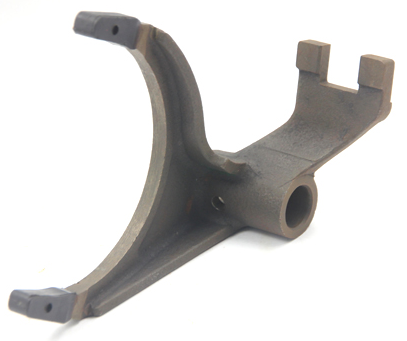How to Classify Automatic Transmission?
Source: http://www.yonglingcn.com Time: 2016-04-14 Hits:0Classifying by the numbers of forward gears
Automatic transmissions, according to the number of forward gear, can be divided into three types: two forward gears, three forward gears, four forward gears. Early automatic transmissions usually have two or three forward gears. These two automatic transmissions that with different shift speed parts don't have the overdrive gear, therefore the highest gear is the direct high gear. New cars fitted with automatic transmission which basically has four forward gears, it equipped with an overdrive gear, and now there are six or seven forward gears.
Classifying by types of gear transmission
Automatic transmission, according to different gear transmission, includs two types of the ordinary gear and the planetary gear.
Automatic transmission of ordinary gear has a larger size, but the maximum transmission ratio is relatively small, it is installed in only a few vehicles(such as Honda ACCORD car). Automatic transmission of planetary gear, which equipped with different shift system parts, has compact structure that can obtain a larger transmission ratio, it has been used in the vast majority of cars.
Classifying by different types of torque converters
Generally, it uses a simple structure, single-stage three components integrated hydraulic torque converter, this converter is divided into two kinds of lock-up clutch and non-locking clutch. The early torques had no lock-up clutch, in any conditions, hydraulically transmitted power of the engine, therefore, the transmission efficiency became lower. Most automatic transmission of new cars use a torque converter with a lock-up clutch, so that when the car reaches a certain speed, the control system keep the lock-up clutch being engaged, and the input and output ports of hydraulic torque converter are connected, the engine power by way of a mechanical transmission directly into gear transmission, thereby improving transmission efficiency and reduced fuel consumption of the car.
Classifying by automatic transmission control modes
The automatic transmission can be divided into hydraulic control of the automatic transmission and electronically controlled automatic transmission according to the different control methods.
1. Hydraulic automatic transmission by mechanical means transform the vehicle driving speed and throttle opening these two parameters into a hydraulic control signal; all control valves on the valve plate according to each of these hydraulic control signals, in accordance with the set shift schedule, by controlling the operations of the shift mechanism, shift system parts and shift speed parts to achieve automatic shifting.
2. Electronically controlled automatic transmission through a variety of sensors, to transform the engine speed, throttle opening, vehicle speed, engine temperature, torque converter oil temperature and other parameters into an electrical signal and input into the computer, the computer according to the set shift program send control signals to shift solenoid valve, oil solenoid valve, so to achieve automatic shifting.
Classifying by different structures
It can be divided into automatic and semi-automatic transmissions according to different structures.
1. Automatic transmission: hydraulic, electromagnetic, mechanical types.
2. Semi-automatic transmission: vacuum, mechanical, electromagnetic, hydraulic (hydraulic pump generates pressure to control the clutch), hydraulic types (converter, coupling).
Classifying by diverse gear ratios
1. AMT: also known as electronically controlled automated mechanical transmission.
2. CVT: such like the hydraulic type, electronical type, metal belt type of continuous variable transmission.
3. AT: refers to hydraulic mechanical automatic transmission.
- Gearbox Differential Housing
- Gearbox Shift Forks
- Gearbox Shift Fingers
- Gearbox Shift Block
- Gearbox Stainless Steel Connectors
- Gearbox balanced Connectors
- Aluminum Forks of Gearbox
- Cam Shift of Gearbox
- Shift Assembly of Gearbox
- Automotive Driving Shafts
- Automotive Brake Linking Bar
- Stainless Steel Connecting
- Elevator Brake Parts



